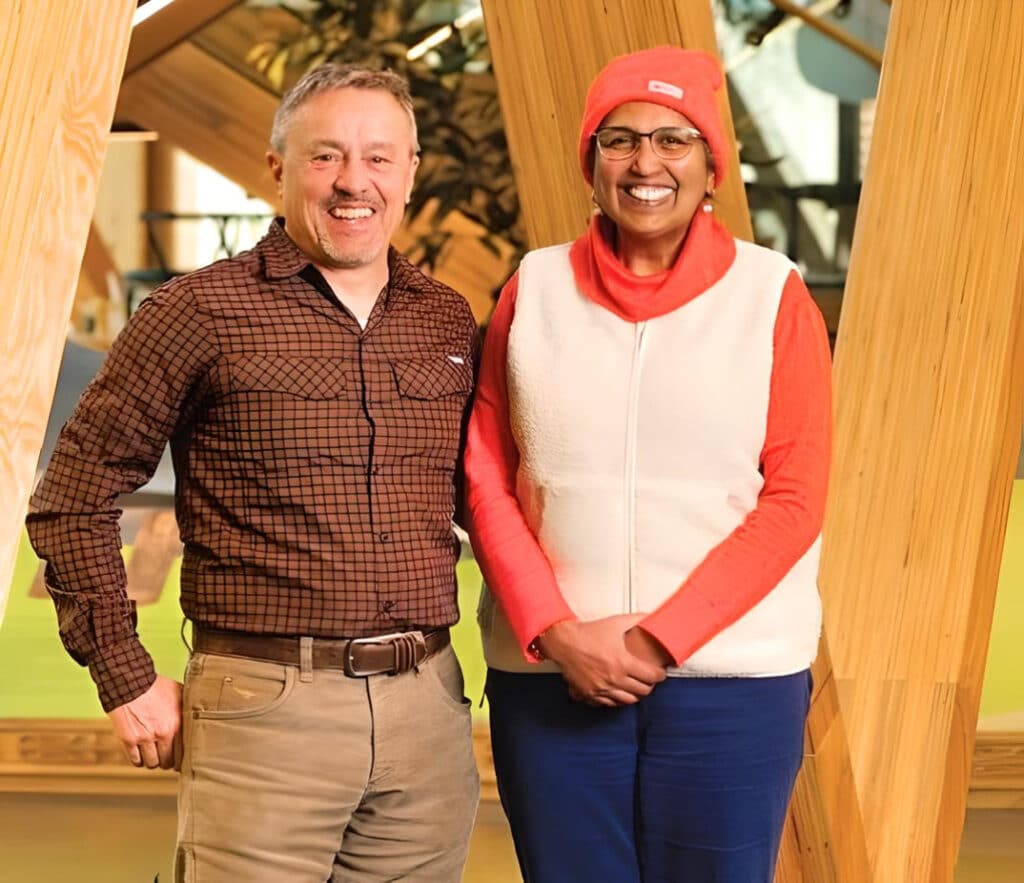New Zealand is looking to mass timber construction systems to meet the future of infrastructure, with the government turning to lightweight, low-carbon construction materials to create a low-carbon transport system.
In particular, timber bridges have become a critical governmental focus, with ministers now joining Scion-managed Timber Unlimited in creating dedicated “timber bridge focus groups” exploring the role of mass timber in future bridges, ranging from multi-lane motorway bridges and multi-span bridges to single-span, single-lane structures.
According to Henri Bailleres, who heads Scion Forest to Timber Products program, timber bridges have the potential to be “one of the most impactful showrooms for timber in the country”.
Speaking to Scion Connections last month, Mr Bailleres said the engineering requirements for timber can be extreme. He said, “Materials must survive 100 years or more, bear dynamic load, and be exposed to many hazards.”
For Mr Bailleres, the importance of timber buildings underpins the value of wood as a construction material, telling Scion Connections, “If we can make timber bridges, we build proof of the high value of timber as a construction material.”
Already, the Waka Kotahi NZ Transport Agency (formerly the New Zealand Transport Agency) is looking into mass timber construction systems as a replacement for steel and concrete across the country’s extensive network of bridges.
As reported in April last year, the agency has started construction on its first timber highway bridge in more than 50 years, working with Scion to ensure the durability of the Glulam meets the bridge’s demanding requirements for generations to come.

As it stands, Waka Kotahi manages more than 4,200 bridges across New Zealand. However, just 14 highway bridges are made from timber, a legacy, with the network undergoing rapid upgrades and expansions since the mid-1960s.
At the time, Rob Campbell, the Waka Kotahi Regional Manager of Maintenance and Operations, said, “Road bridges in New Zealand generally utilise concrete or steel,” before adding that the project was the “first to herald a return to a more sustainable design, incorporating timber beams and a deck.”
For Waka Kotahi’s chief engineer, Sulo Shanmuganathan, the pivot from steel and concrete to mass timber is part of the vision for a low-carbon, safe and healthy land transport system, driven by the NZ Government’s Carbon Neutral Government Programme, accelerating the reduction of emissions across the public sector.
“Through the government’s Carbon Neutral Government Programme, we are focused on playing our part in accelerating emissions reductions in the public sector by lowering our embodied carbon materials and using more sustainable construction options than what we conventionally used.”
Before adding, “The mahi we’re doing with Scion is very important because the far-reaching positive impacts of using more sustainable materials will benefit both the community here and now and will carry forward for future generations.”
Working with Scion’s Tripti Singh – who last year was appointed lead of Australia’s Timber Durability and Design Centre – and Dave Page, Waka Kotah explored how treated radiata pine and glue laminated beams can withstand massive shock and durability concerns associated with a busy state highway bridge in the elements.
“We want the right people involved, and of course, Scion is very important for developing timber bridges because they already have the depth of expertise and research developed over more than 70 years,” Ms Shanmuganathan told Scion Connections.
“In the long term, we want to see Glulam readily available and designers capable of using the product and timber like they use other conventional materials. Raising awareness in the sector for designers and construction is crucial as we transition to a low carbon, climate resilient transport system that will create a better tomorrow for us all.”

According to Mr Campbell, the key to project success is layering, with Glulam twice as strong per kilogram as steel and specifically designed for durability and resilience.
“Glulam has an extended lifespan with minimal maintenance needed, effectively absorbing energy from earthquakes and offering good fire resistance.”
And whilst wood may appear to be a fire risk, large-section timber performs well in fires as it chars at a known rate and does not deform like steel. “This enables us to significantly reduce the size of the foundations, which consequently lowers carbon emissions, material costs, and construction time,” Mr Campbell told Waikato Herald back in April.
Once constructed, the new bridge will retain the same length as its predecessor but will be 3 metres wider, boasting improved safety features – including a new side barrier fitted along the bridge’s outer edge.
The bridge, a hybrid construction system, will rest on simple concrete foundations and incorporate new scour protection upstream and downstream.






